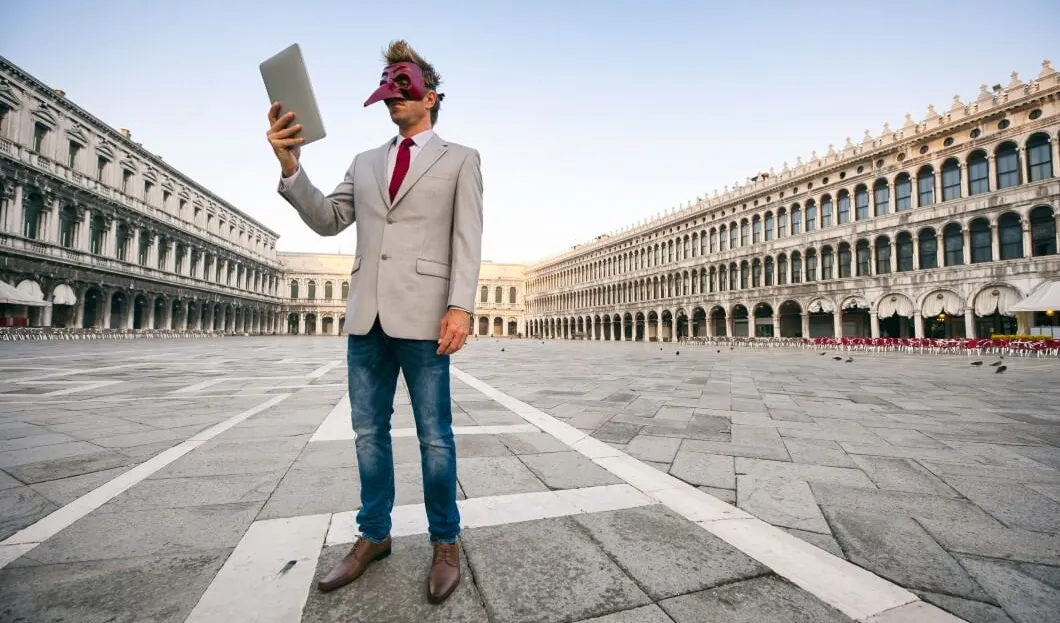
For the first time in centuries, fewer than 50,000 people live in Venice. So far, this trend cannot be stopped. The lagoon city is in danger of degenerating into an open-air museum.
Venice itself is transience. Not just because the city on stilts will indeed be swallowed up by rising sea levels in the near future. Venice breathes the aesthetics of decay through every brick: the salt water erodes the delicately colored facades from below. The black gondolas float on the water like coffins. The putrid smell of decaying sea life hangs in the lagoon. And then there's even its own cemetery island, over which heavy fog hangs in autumn when you look over from the Fondamente Nuove.
On August 10 of this year, Day X for Venice occurred, the point of no return: the number of inhabitants fell for the first time in history below the mark of 50,000. This is a psychological limit, as the citizens' initiative venessia dot com writes: If tourism took over the city, one could no longer speak of Venice as a city according to the ancient ideal of civitas, but as a leisure park.
Guests Clog the City
That the city is running out of locals is not a surprising development. For decades, people in Venice have been talking about depopulation, the spopolamento.
After World War II, 175,000 people inhabited the old city - more than at any time since records began. Since then, there has been a steady downward trend, with the number dropping below 100,000 for the first time in 1978.
Luigi Brugnaro, the liberal mayor, however, argues that the figure is much higher: students or professionals who only temporarily inhabit the city are not obliged to register a residence and do not appear in the official statistics. Despite various counting methods used to check the pulse of the city, the diagnosis remains: more people are buried in Venice than are born.
The same can be observed on the lagoon islands, Sant'Erasmo, the fishing island of Burano, Pellestrina and Murano.
The fact that death is now also befalling the city itself is ironically due to that morbid charm that acts as a tourist magnet and ultimately makes Venice a victim of itself. Thousands of guests from all over the world clog the city's narrow calli every day. For years, politicians debated how to regulate the flow of people. Meanwhile, cruise ships cast their great shadows over St. Mark's Basilica as they passed freely along the Giudecca Canal.
Protests against tourism hit the headlines, garnished with a new genre of Venice photography: pictures of tourists with naked torsos and dangling legs along canals, pictures of tour groups devouring boxes of noodles they had brought with them on the stone floor, pictures of young men climbing monuments, and above all: pictures of crowds, crowds, crowds.
The problems with mass tourism are homemade: Most of the city's socio-cultural measures have so far gone into restorations and the preservation of historic buildings rather than into housing. While residents have had to pay less for maintenance, on the other hand, this has not resulted in affordable housing. Living in Venice is expensive: The average rent per square meter in the historic districts is between 15 and 17 euros. In addition, there is hardly any work beyond tourism and commerce, and the administrative offices have been moved to the outskirts of the city to Piazzale Roma or to Mestre. In addition, the municipality manages the housing market poorly. Many private apartments have been approved in recent years as second homes or for tourist use. Consequently, property prices have risen, and students and young families have been driven to the mainland.
Venice as a Vacation Village and Open-Air Museum
Numerous bed & breakfasts and Airbnb have turned Venice into a huge vacation village. Early in the morning, when guests are still asleep, and in the off-season, however, the alleys are eerily empty.
For years, the city has been making mostly half-hearted attempts to stop the exodus: Brugnaro recently announced plans to double the number of students at the university to 50,000. In the near future, the Italian parliament is also expected to pass a regulation that will give the city more leeway in dealing with tourist rents.
Accordingly, Venice can determine for itself how much real estate may be rented for a short period of time. In addition, a private apartment in Venice cannot be rented out to guests for more than 120 days a year. The measures are aimed primarily at rental platforms such as Airbnb, where as many as 7,000 apartments are offered in Venice. The new regulations for Venice are also a test run for other cities of culture with a heavy tourist load that could adopt the Venice model in the future, such as Rome, Florence and Bologna.
The tradition-conscious cultural and environmental protection organization Italia Nostra has been demanding for years that Unesco put Venice on the list of endangered sites - which also includes the historic center of Vienna. Venice's failure to get a grip on tourism is having a negative impact on the city and the ecology of the lagoon, Italia Nostra says.
Another point of criticism: is the unstoppable urban exodus of the locals. Venice narrowly escaped being placed on the negative list in 2021. The city managed to do so thanks to a decree from Rome that finally banned cruise ships from the San Marco basin. Venice vowed to do better. Unesco, however, wants to continue to watch over the lagoon with a wary eye: By December of this year, Venice must deliver a report on the overall situation, and in 2023 the cultural authority will examine the city again. Until then, the exodus will continue.










